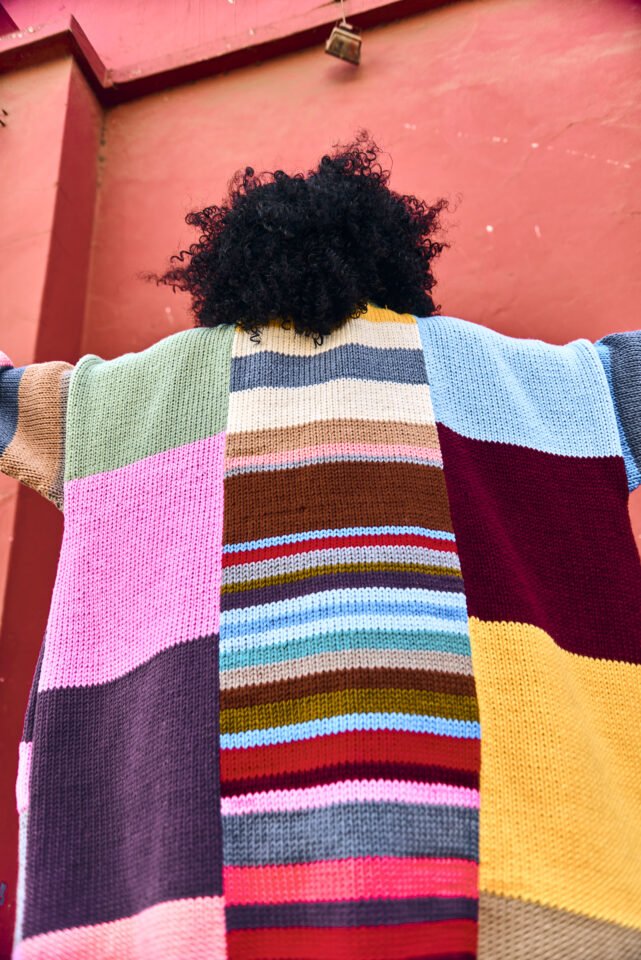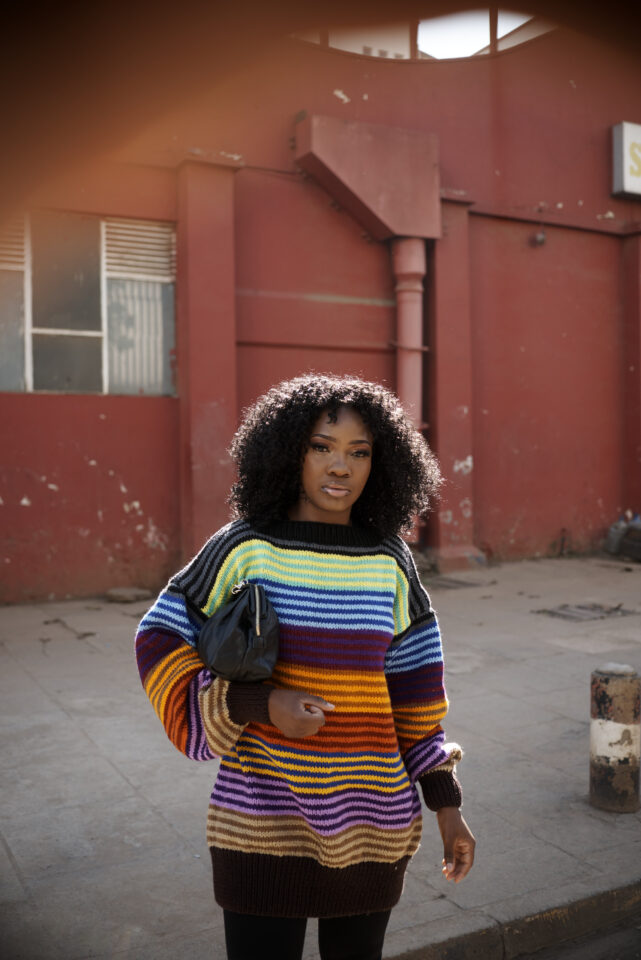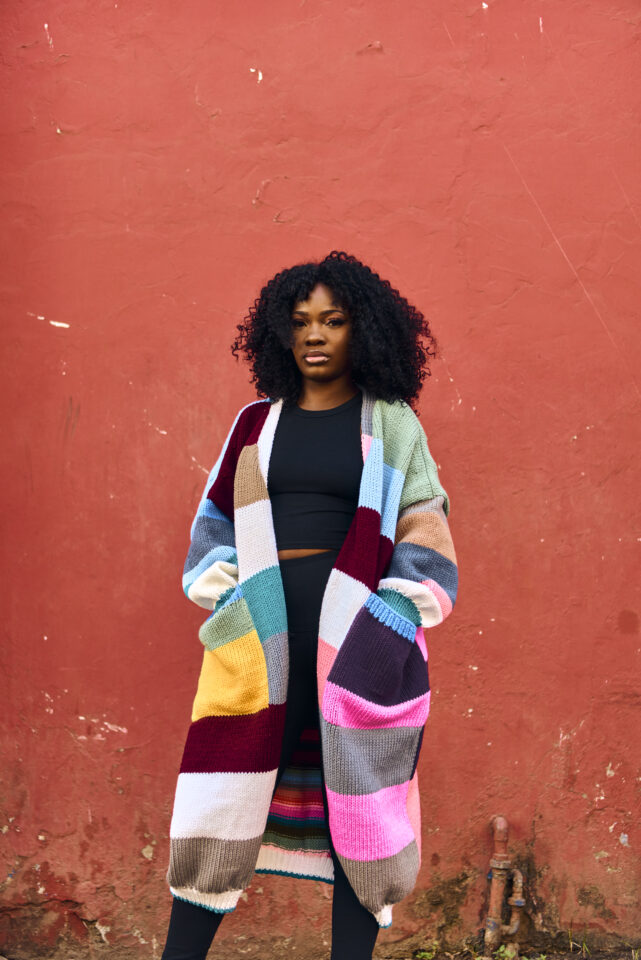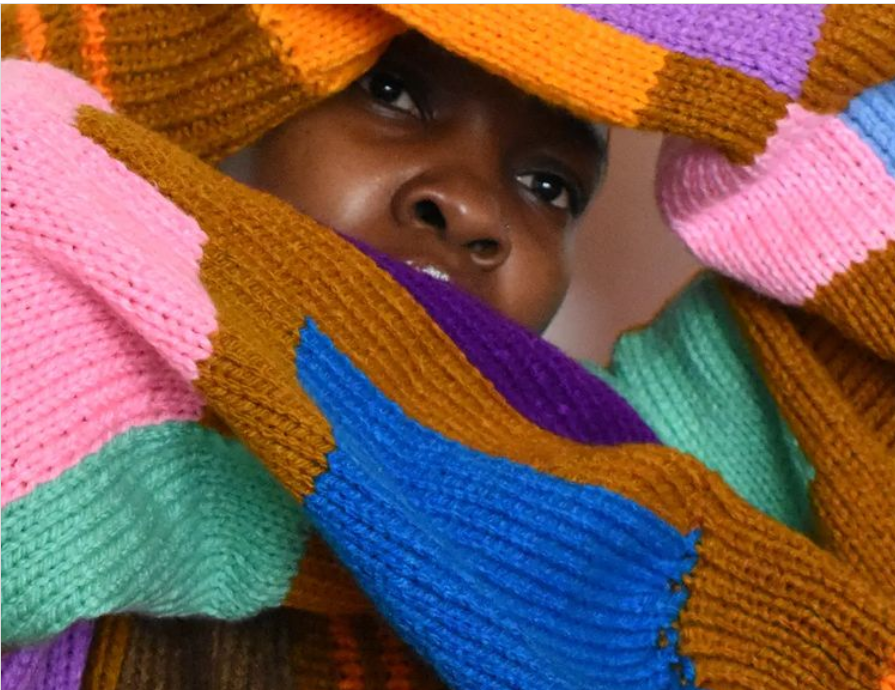Many of us, yours truly included, grew up watching our mothers knitting and crocheting. My mum for instance never went to the shops to buy our sweaters, shawls, or gifts for newborn babies in the neighborhood. She just bought yarn and made them.
Such is the case with my guest today in the ongoing series of spotlighting women who are making it in unique careers. This article part of a series in a partnership between Femmehub here and Gilbey’s Mixed Berries Gin to highlight stories of women who are excelling in their fields despite considerable odds. Why Gilbey’s Mixed Berries Gin? Because it embodies the spirit and energy of a career woman, both in formative and successful stages. How she works, how she entertains herself, how she unwinds with friends and how she deals with downtimes.
Amagove Mugere is a Nairobi based knitwear designer who has carved a niche for herself in adult sweaters. She picked the knitting interest from her mum and even after growing up and training as an electrical engineer, curiosity and talent took over and here she is now, living her passion and dreaming big about her business. By taking advantage of the boom in social media, she is able to work from home and market her products online, mostly on Instagram. She then ships them to clients both locally and internationally.
It is on that very Instagram where she keeps up with developments in her industry by following other knitters, runway models and fashion news. Still on that IG vibe, she has since been featured on Vogue Knit Live as well as Laine Magazine – an international publishing house that focuses on design, knitting and crafts.
As much as she was artistic when growing up, she never thought she would end up taking up the arts as a career, but she is loving every bit of it. She’s at home, collecting yarn to inspire a look, sketching, choosing colours, making swatches according to measurements and then proceeding to stitch. Her style is modern, vibrant and colourful as is evident on her IG.
What is her typical day like?
She does not exactly have a typical day. Just things that she needs to do, and very good planning so that she does not miss out on work, journaling, unwinding, and spending time with her family. Other than knitting, she also teaches mathematics at a nearby college and that also goes into her meticulously planned days.



Why knitwear design?
Well, for starters it pays her bills. In the seven years she has been at it, she has seen her business grow to a point where she was able to purchase her first machine in January this year. Second, knitting is a fun colourful world with beautiful products which in Amagove’s case sell out in a matter of hours once she puts them out online. Third, knitting and crocheting are very meditative and therefore great for mental health. The focus and concentration that it takes to bring a piece to fruition means that one has hours of a calm still mind in which to keep unhealthy thought patterns at bay.
Amagove’s growth has been a steady curve over the years, having started with kid’s outfits when she was in college. In fifth year, she posted her work online and the response was massive. Not just in terms of increased customer base, but also in terms of linkages with the local and global knitting community which she describes as tight and very supportive. We are looking at instances where other knitters have sent her yarn for free from abroad because it is not available here in Kenya. In the years that she has been in this field, she has watched the local community grow from a few people making bra-lets to a thriving and commercially viable industry.
She has also grown to learn much more of the craft, including assorted inputs that come together to create the final piece. Different types of yarn for different effects like drape, stretch and breathability of the garment. Assorted needles like big ones for creating the overall piece and small ones for ribbing and putting finishing touches. She has learned to combine knitting and crocheting into one piece, something I find very fascinating.
As her business grows, so are her dreams. Other than wanting to buy more specialized machines to meet growing demand, Amagove dreams of one day being able to open a knitwear college in Kenya where people can do some serious learning and even get certification. Her goal with the college is to be able to train people living with disabilities, and others from underprivileged backgrounds so they have additional monetizable skills. She got me thinking how knitting and crocheting can be absolute magic for PLWDs.
On a business front she plans on releasing two collections every year and this dream is within reach seeing that she has started buying machines. She also wants to do a masters in design and knitwear design. Her biggest dream of all though, which she’s putting out to the universe, is to be able to attend the Paris Fashion Week.

Creating a knitting career in Kenya is not without its challenges and for Amagove, the biggest challenge is meeting demand especially in her case where collections sell out in under 24 hours. These challenges are not only informed by unavailability of resources, but also of inputs locally. For instance, the yarn collection in the country is not very wide. Cotton yarn is available but very expensive and wool is not of the quality she works with. This leaves importing as the only option, and this poses more challenges because air freight is very expensive and sea freight takes months to deliver. So, if she’s planning on doing a collection, she is hindered by costs and lack of inputs.
She has taken the option of acrylic yarn which is in plenty in Kenya but as her business grows, she intends to lean more towards wool and cotton for sustainability purposes. Speaking of sustainability, Amagove aims for her business to be fully sustainable in a few years as a personal initiative towards the environment.
To those who still believe that stitching and knitting are for the older generation, she says there’s nothing like that. If anything, the current generation is very keen on their identity and the individuality and versatility that knitting offers fits them to a tee.
To younger women who would like to take up this art, she says go for it. The world is shunning fast fashion and mass-produced clothes in favour of more personalized ones, and herein lies opportunity.